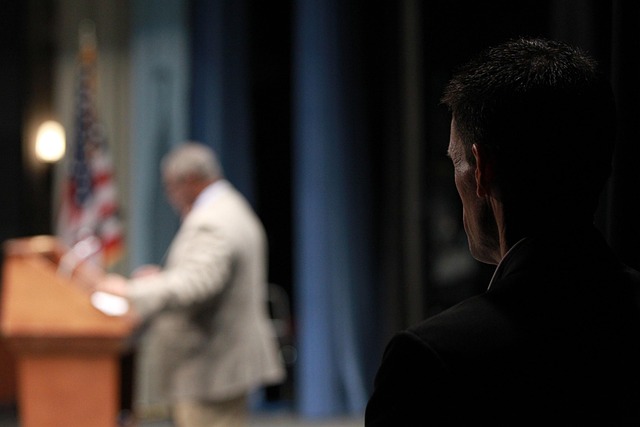Event security for executives requires specialized strategies due to high-profile attendees and stringent safety requirements, including advanced threat assessment, specialized training, robust access control, and seamless communication. Building a flexible and scalable security team with diverse skills in close protection, surveillance, and crisis management is essential. Technology, such as biometric identification tools and real-time threat intelligence platforms, enhances scalability and proactive security. Risk assessment tailors protection based on each VIP's profile, while effective communication strategies facilitate real-time updates and informed decision-making. Technological advancements like biometric access control and event management software optimize security and enhance the experience for executives.
“As event organizers, ensuring the safety of high-profile attendees, especially VIPs and stakeholders, is paramount. With escalating security threats, scalable security teams are becoming a necessity for major events. This article delves into the intricate process of building an adaptable and robust security force tailored to executive events. We explore strategic approaches, from risk assessment and communication strategies to leveraging technology, to provide unparalleled protection for VIPs without compromising overall event integrity.”
Understanding the Unique Challenges of Executive Event Security
Event security for executives and VIPs presents a unique set of challenges that demand tailored strategies. Unlike standard public events, executive gatherings often involve high-profile individuals with stringent safety requirements. The presence of influential figures, such as CEOs, government officials, or industry leaders, attracts significant attention from the media, potential threats, and a heightened level of scrutiny.
These events require comprehensive planning to ensure not just physical security but also discretion and privacy. Protecting executives from both visible and covert risks necessitates a multi-layered approach. This includes advanced threat assessment, specialized training for security personnel, and implementing robust access control measures. With multiple stakeholders involved, effective communication and coordination among event organizers, security teams, and local law enforcement are crucial to ensuring a seamless and secure experience for all participants.
Building a Flexible and Scalable Security Team
To effectively manage events with multiple VIPs and stakeholders, building a flexible and scalable security team is paramount. This involves recruiting a diverse range of professionals with specialized skills in areas like close protection, surveillance, and crisis management. A dynamic team structure that can adapt to changing event needs is key. Cross-training staff ensures coverage during peak times and allows for quick adjustments when unexpected incidents arise.
Technology plays a crucial role in scalability. Implementing advanced communication systems, biometric identification tools, and real-time threat intelligence platforms enhances the team’s ability to monitor and respond. By leveraging these resources, event security for executives becomes more proactive and efficient, ensuring the safety and peace of mind of all high-profile attendees.
Assessing Risks and Prioritizing VIP Protection
When organizing events with multiple VIPs and stakeholders, assessing risks is a critical step in crafting an effective security strategy. Event security for executives goes beyond standard crowd control; it involves identifying potential threats tailored to high-profile individuals. This includes evaluating access points, ensuring discreet yet robust surveillance, and implementing communication plans for rapid response. Each VIP’s unique profile necessitates a personalized approach to protection, factoring in their preferences, known associates, and potential vulnerabilities.
Prioritizing VIP protection means assigning dedicated security personnel equipped with specialized training. These professionals must be adept at managing high-level protocols while remaining flexible enough to adapt to dynamic situations. By ranking VIPs based on risk assessment, security teams can allocate resources optimally, ensuring that those most at risk receive the closest vigil. This strategic approach enhances overall event security and contributes to a seamless experience for all stakeholders.
Implementing Effective Communication Strategies
Effective communication is paramount when managing event security for executives and VIPs, ensuring a seamless experience for all stakeholders. With multiple parties involved—from event organizers to security personnel and high-profile attendees—a clear, structured communication strategy is essential.
Implementing open lines of communication allows for real-time updates on any potential threats or incidents, enabling swift responses. This includes establishing dedicated communication channels, such as secure text groups or direct messaging apps, where relevant information can be shared instantly. Regular briefings and debriefings should also be conducted to keep everyone informed, especially when introducing new security measures or adjusting plans based on evolving event dynamics.
Technology's Role in Enhancing Event Security for Executives
Technology plays a pivotal role in enhancing event security for executives, ensuring their safety and comfort during high-profile gatherings. With multiple VIPs and stakeholders present, advanced security systems become indispensable tools. Biometric access control, for instance, can verify identities swiftly and accurately, restricting entry to authorized personnel only. CCTV surveillance systems, integrated with AI, provide real-time monitoring, enabling security teams to detect and respond to potential threats promptly.
Additionally, event management software streamlines communication and coordination among various stakeholders, including security personnel. This technology allows for efficient deployment of guards, access tracking, and incident reporting. Through the use of these technological advancements, event organizers can create a secure environment, fostering a seamless experience for executives while ensuring their protection.
Scaling security for events with multiple VIPs requires a dynamic approach. By understanding the unique challenges of executive event security, building flexible teams, assessing risks, implementing clear communication strategies, and leveraging technology, organizers can ensure robust protection for all stakeholders. These strategies are essential to navigating the complexities of high-profile events and fostering a safe environment for folks at the highest levels. Remember that in the world of event security for executives, preparedness is key to a successful and secure gathering.
